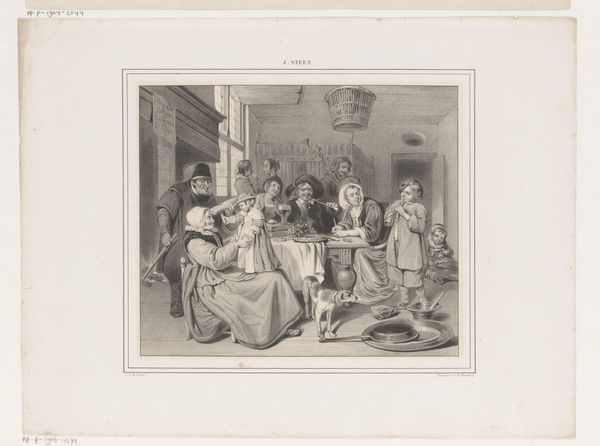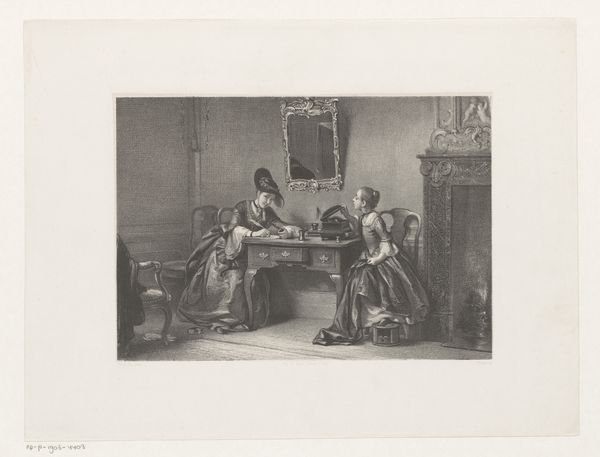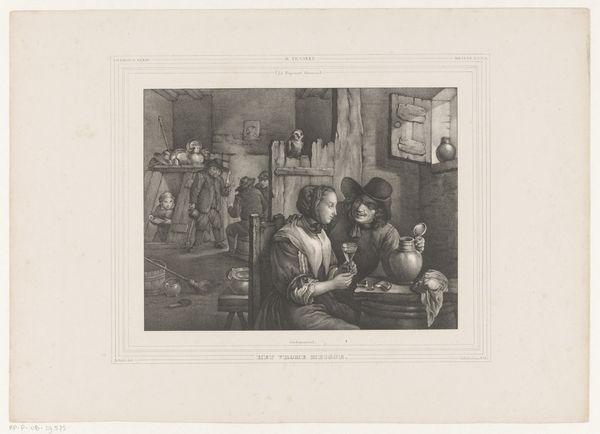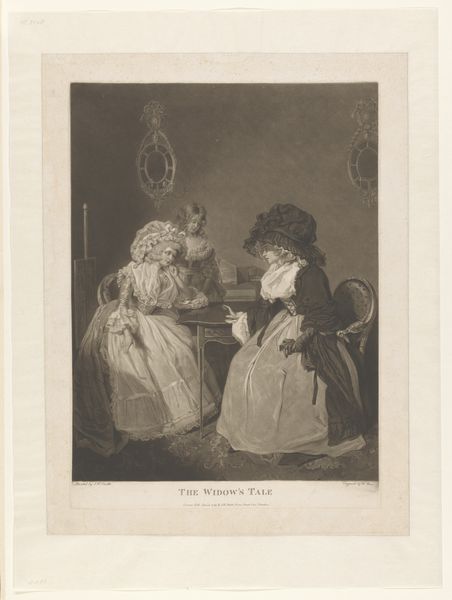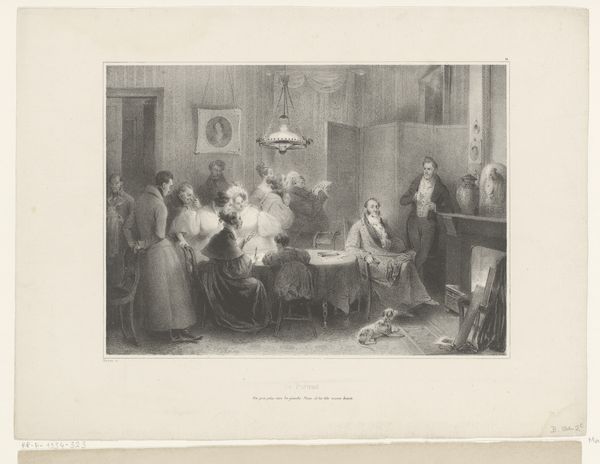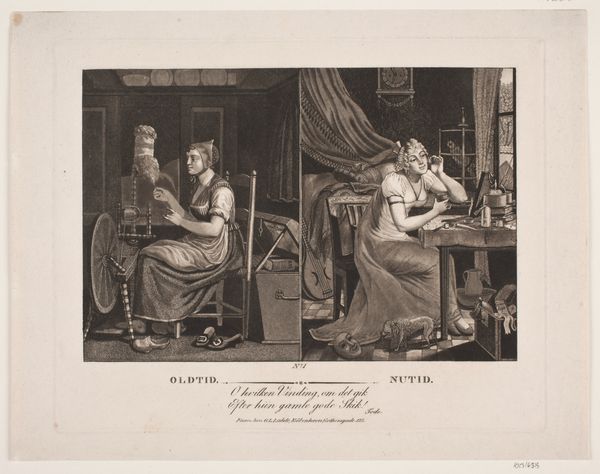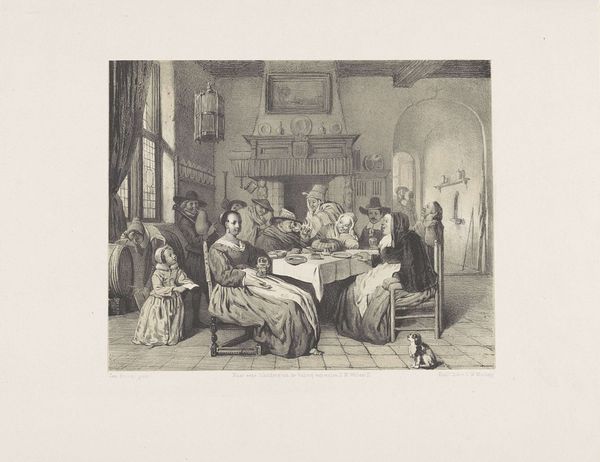
#
portrait
# print
#
genre-painting
#
realism
Dimensions: 395 mm (height) x 454 mm (width) (Plademål)
Editor: This is "En Osteriscene," a print made between 1853 and 1857 by Edvard Sonne. It gives the impression of everyday life, maybe a casual family scene. What stands out to me is the clear delineation of figures and setting. What strikes you when you examine it? Curator: What immediately grabs my attention is the labour embedded in its production as a print. Consider the layers of process. Sonne didn’t just capture a scene; he chose a medium that allowed for reproduction, a deliberate act of making art accessible and, in a way, consumable. How does this contrast with a painting from the same period? Editor: That’s interesting. Painting feels more singular and valuable somehow? While this is a print intended to circulate. Curator: Precisely. Look at the depiction of labour *within* the scene too – servers are visible through a window in a secondary space. Sonne is very conscious of depicting multiple facets of class structure at work, not only by representing bourgeois women enjoying themselves, but by portraying the physical labour of others that is implied in this social exchange. Editor: That does recontextualize the scene. It’s no longer just a social event; it hints at labor practices that afford their leisure. Curator: Absolutely! Moreover, it is useful to explore this print not as high art but rather a kind of 'commodity image' or precursor to modern consumerism. It circulates widely, showcasing the clothing, accouterments, and very lifestyle that an emerging bourgeois public might aspire to achieve and eventually purchase through a complex, unseen matrix of human production and consumption. What thoughts does that provoke for you? Editor: It prompts me to consider how even seemingly straightforward genre scenes are always mediated by production methods, intended distribution, and wider social realities related to labor and value. Curator: Exactly. Attending to the process of creation, the material conditions, and intended consumption provides an entry to unpack its layered significance beyond a simple portrait.
Comments
No comments
Be the first to comment and join the conversation on the ultimate creative platform.



